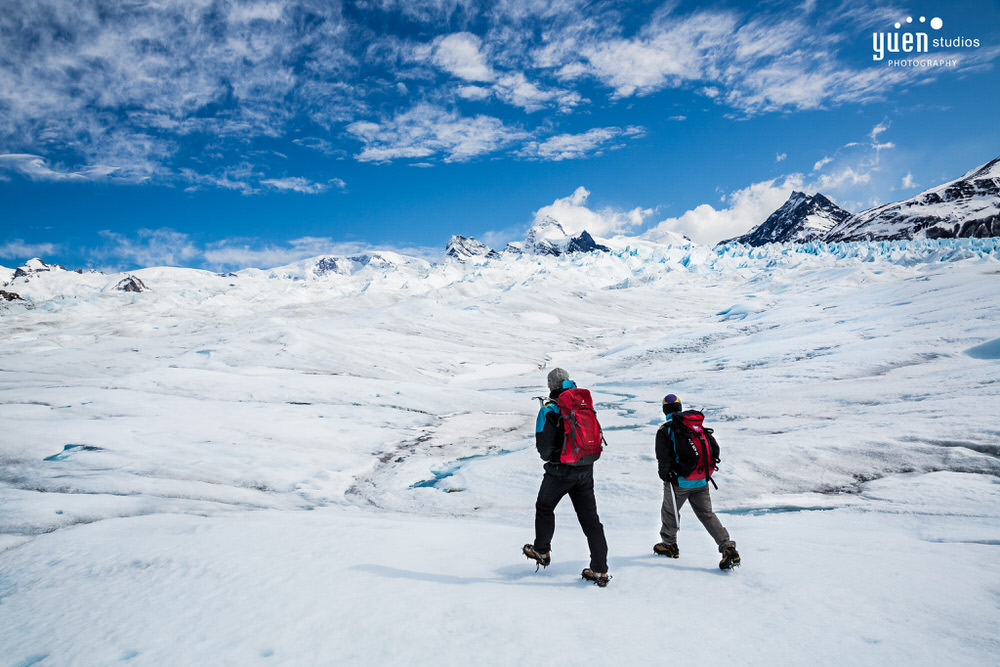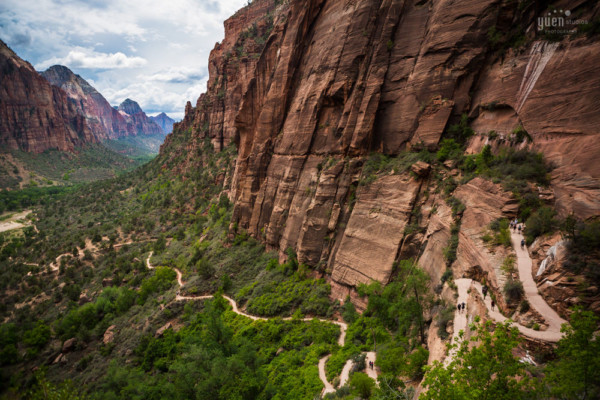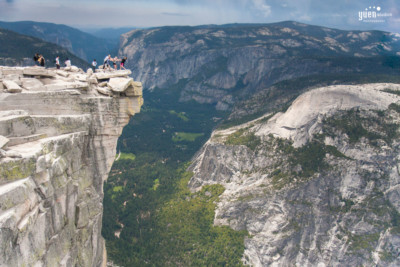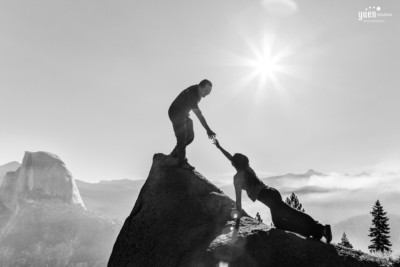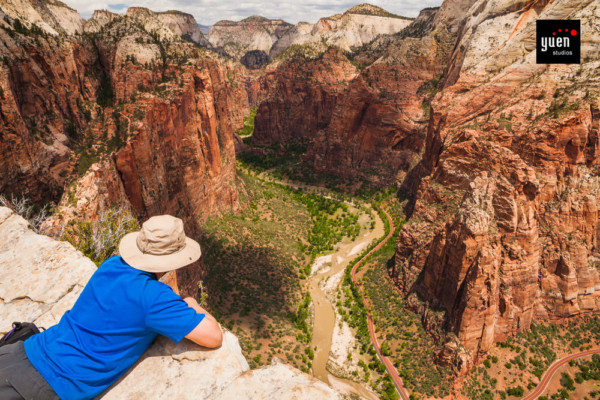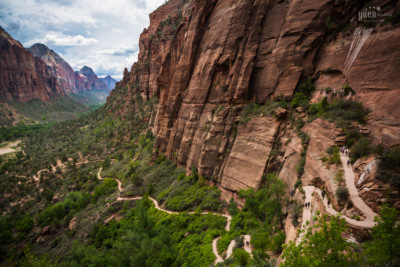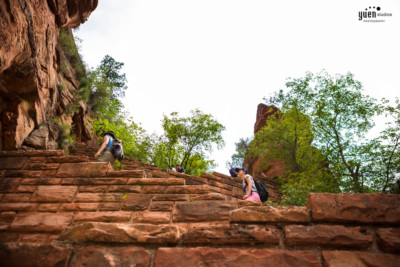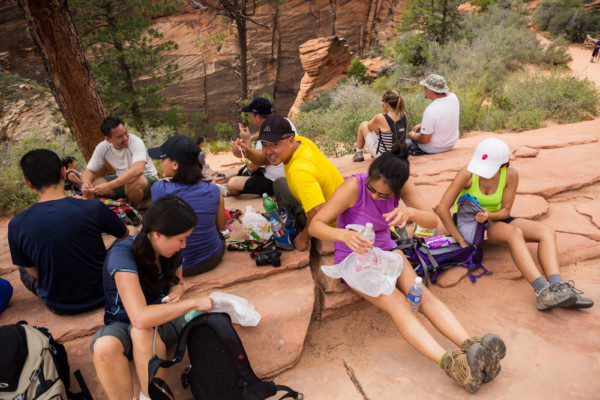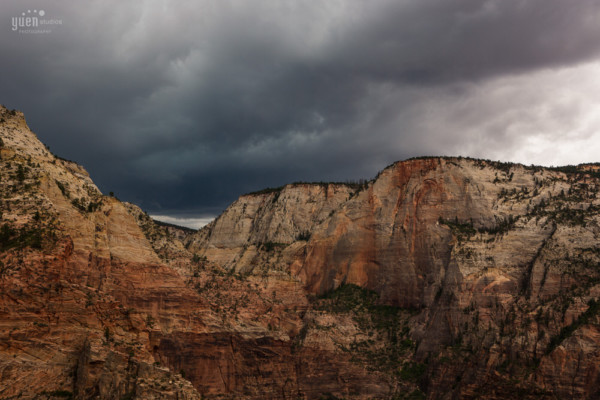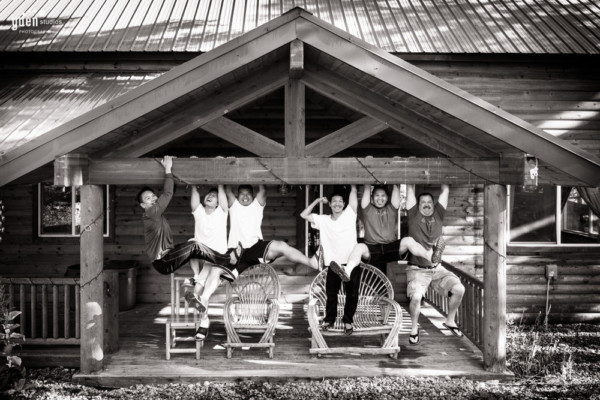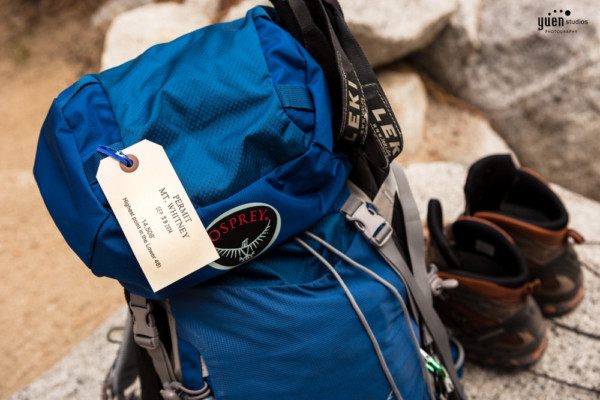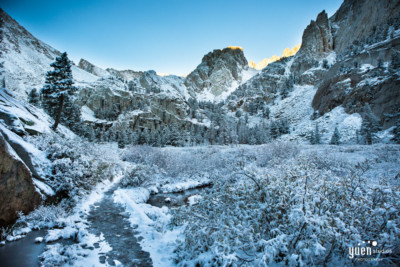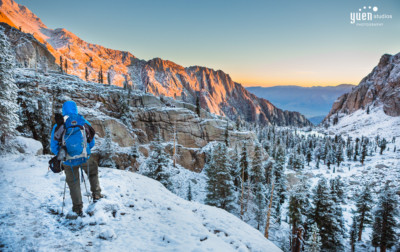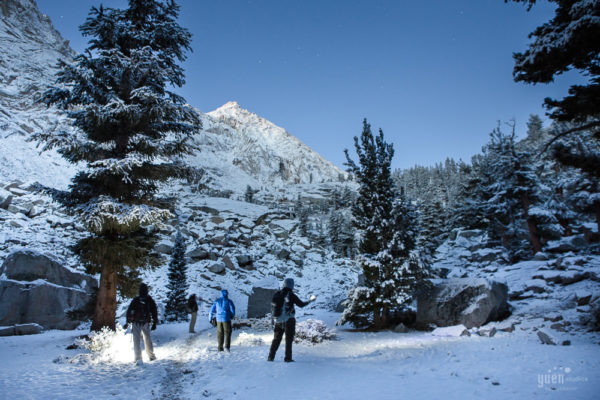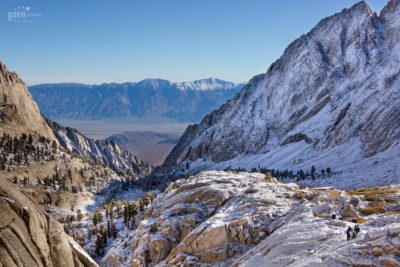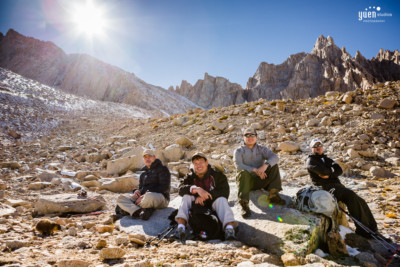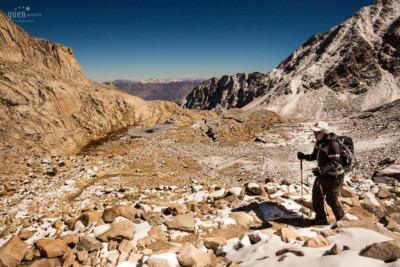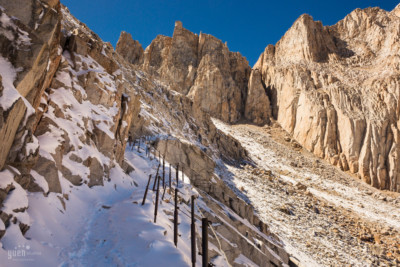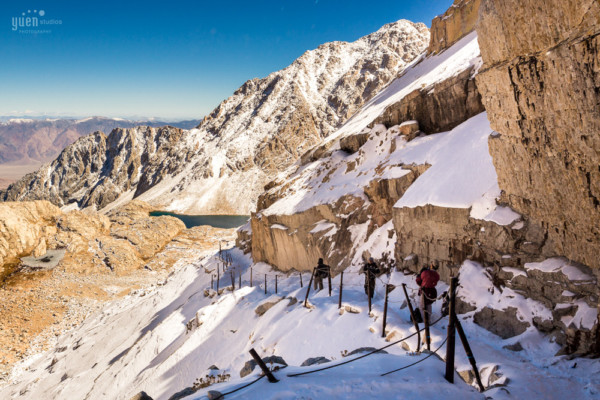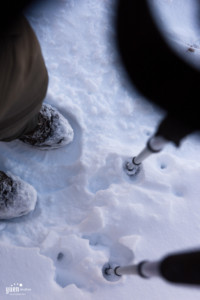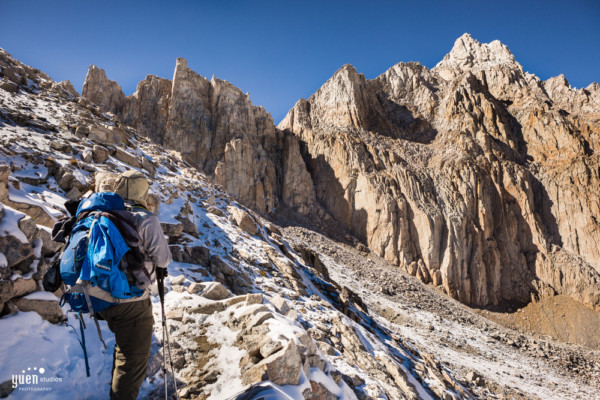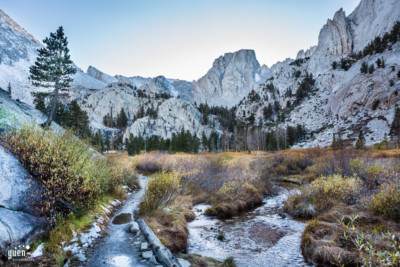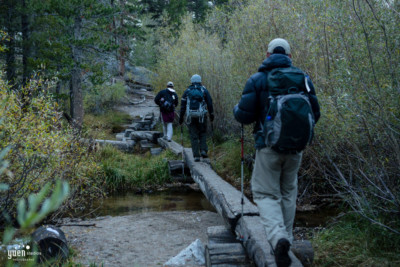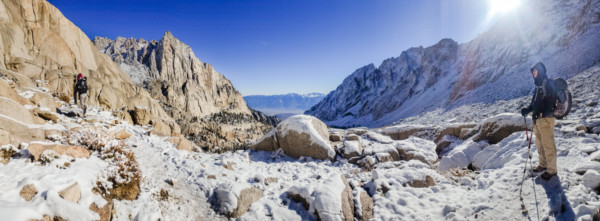Contents
Safe To Continue?
The risk is real. After weeks, months, or even years of preparation, you may have found yourself on a hike you had been dreaming about. You were about to reach your goal — the top of that mountain and the thrill of having achieved something you wanted so badly — but inclement weather was about to turn that feeling of hope into that of desperation. You were SO CLOSE already. What do you do? Do you turn back or do you keep going? Continue just a little longer?
I have seen many hikers, myself included, face this question. It is not a situation one wants to find himself in, but the decision could mean the difference between life and death. On one hand, you feel compelled to continue — you are so close already — but on the other, you know deep in your heart that doing so is very dangerous. You may even choose to keep going at any and all costs with reasons that might not make sense. That behavior, dear reader, has a name: Summit Fever.
Summit Fever: “The state of mind in which a person fails to notice severe changes in weather conditions, route conditions, physical exertion and refuses to take them into consideration in their desperate quest to reach the summit.” (Neverland Living)
The fact that someone would make irrational decisions or illogical choices because of their innate desire to make an objective — at whatever costs — is dangerous and downright obsessive. I had faced these decisions myself a lot and had also seen many ignore rational warnings by fellow hikers to turn around.
Here are my stories and how being aware of Summit Fever is an important step in making the right choice that could save your life and those of others. The realization also changed the way I hike and why I try my best not to leave anyone behind.
My Real-Life Stories
Yosemite’s Half Dome
In 2009 at about 1pm, our hiking party was on the way up towards Yosemite’s iconic Half Dome that towered 8,839′ (2,694m) above sea level. The summit of the large, granite dome was just within reach as we approached the cables whose purpose was to protect visitors from plunging to their deaths on either side. People had tragically slipped and fallen there in the past.
There were dark clouds forming not too far away and rain had already started to drizzle. Half Dome is a lightning rod with its massive rock feature. A flash of powerful electricity could strike down at any time, and the rain was about to turn that granite into a slick, wet surface that could drag hikers off the mountain and plunge to their deaths below.
Our hiking party was already tired after 6 hours of trekking uphill since 7am, and we knew there was a possibility that we may have to make a treacherous walk back to camp under heavy rain and darkness while several, exhausted members had cramped thighs that made their every step painful. The super majority of us never summitted Half Dome before. We were faced with the agonizing question:
“Should we give up and turn around or keep moving forward despite all the signs of imminent danger?” We were so close. Turning back would have been devastating for the group.
We sat there contemplating whether to go up the cables. The crowds were thinning out and several hikers advised us to turn back. Then the rain suddenly stopped and the sun peeked through the clouds. Hooray! We decided to summit and spent several hours soaking in the marvelous views until drops of rain once again warned our cheeks to go back down. The wind was already picking up.
As we made our way down, I came across Julio, our lone member of the group with a late start making his way up the cables. “You should turn back, Julio. It is becoming dangerous here,” I cautioned him with concern. “Nah, I am already here. If I am meant to die, then I will die,” he replied with a smile and proceeded up Half Dome. I could not convince him and as the group lead, I had a responsibility to make sure the other members of the group would all make their way back to camp safely. I hated that feeling. I never leave anyone behind, but he had already made up his mind as an adult. One of my friends later came up to me and said, “He has summit fever.” That was the first time I had ever learned of that term, and it made perfect sense. Just hours ago we were faced with that same compulsion to continue despite instinct telling me that was a bad idea.
It was around 8pm when we returned to our tents in complete darkness with aching feet that felt like concrete. Julio never left my mind. Was he okay? Those agonizing hours seemingly took forever as my watch turned 10pm. Still no sign of him and a ranger said that hikers were not considered missing until the next day. I started walking back up with a group of friends towards the Vernal Fall Footbridge with flashlights on our heads. Each person we passed, I asked if they saw someone who looked like Julio. You could not miss him. He was a big, Mexican man with a friendly demeanor. Then at around 11pm, we finally saw him limping down the John Muir Trail. I was so happy to see him make it back down safely, took his pack off his aching back, and offered him a fresh bottle of water and some food.
That evening, I learned in the news back home, a hiker tragically slipped off Half Dome and died. That could have been one of us.
Zion’s Angels Landing
Two years after I first climbed up the narrow, thrilling spine of Angels Landing in 2011, a tall rock formation in Zion National Park that sits at 5,790′ (1,765m) in elevation, I led a group of friends and family to the very same, favorite hike. Some parts of the trail are so narrow, a slight misstep could send you a long way down the sheer cliff face with no chance of survival. That August 31, 2013, afternoon was in sharp contrast to the hot Memorial Day weekend that brought beads of sweat down the sides of my face. It was cloudy and pleasant, in fact, and I was eager to bring several friends and my little brother up that treacherous hike. The memories of two of my closest friends paralyzed with fear on the side of the mountain just a couple years prior was still fresh on my mind. I was looking forward to be up there again.
The entire group was in good spirits as we passed one beautiful sight after another and through Refrigerator Canyon where a welcome breeze would cool us down before heading up the Walter’s Wiggles switchbacks. “Take your time and go at your own pace,” I told everyone, so they could conserve their energy for what was yet to come: the steep climb up the Angels Landing spine itself. We were all seasoned hikers, but sometimes our eagerness to reach our goal could siphon off enough energy to drain that enthusiasm.
When we reached Scout Lookout with its magnificent, 360-degree view of the Zion canyon, we decided to take a lunch break before we would embark on the final, difficult section up the Landing. But the weather had changed quickly. Flashes of lightning could be seen in the distance and thunders followed soon after. The interval between lightning and thunder grew shorter and shorter, and I knew that bad weather was headed our way. I reminisced about my Yosemite Half Dome hike in 2009 when a friend first shared the “Summit Fever” term. I vowed to not make the same mistake this time and observed the situation we were in. Life was too precious to risk going up the mountain for. We could always return another time.
As we sat there having lunch, the thunder grew astonishingly loud and the inside of my body literally trembled through its core. I had never been that close to thunder and lightning before — not to the point where my chest actually vibrated with the rumbling roars of Mother Nature. I wondered if anyone else was getting anxious, but nobody seemingly did. People just laughed in awe and pointed into the direction of the sounds that ripped through the air.
Flash… 1… 2… 3… 4… Rumble. That lightning touched down less than a mile away: every 5 seconds equaled a mile in distance. Flash… 1… 2… 3… Rrrrrrumble! “OH, CRAP!” That last thunder invisibly and violently shook my entire body with a warning that could no longer be ignored!
“Guys, let’s pack up and head down!” I told everyone, “We will not be going up Angels Landing today.” I rushed several friends to pack up quickly who were unaware about the severity of the approaching danger. Other hikers started to get up too.
As we were going down the Walter’s Wiggles switchbacks, I saw several, young, college-aged hikers making their way up. “You guys should head back,” I warned them, sharing how close the lightning had approached. They looked at me briefly and continued up. “That was how I was in Yosemite,” I thought to myself when I did not heed the advice of other hikers. Many others, however, did turn around.
We made our way safely back to the cabin and enjoyed the rest of the day exchanging stories over a mesmerizing campfire. I was so glad to have learned how “Summit Fever” could affect one’s rational decision making in the face of a strong desire to reach a goal.
Mount Whitney
With an elevation of 14,505′ (4,421m), Mount Whitney is the tallest mountain within the contiguous United States and the Sierra Nevada. One must obtain a permit to hike up that popular peak, and getting one for your chosen date had notoriously been difficult. One of my friends (whom I shall call “John” for this story) got us one for September 29, 2014, for a day hike — in other words, we had to go up and down that same day. That would not be an easy task, especially since we had not been training for it.
Our plan was to drive up on Sunday morning to pick up the permit, spend the day at the 8,000-foot (2,438m) elevation Mt. Whitney Portal Campground to get acclimated to the high altitude, then head on up at midnight for the 22-mile (35km) roundtrip. We would have an elevation gain of 6,100 feet (1,860m) before turning around and driving straight back home. We knew it would be a long, exhausting, 20+ hour day, but we were thrilled to finally get to hike one of the most famous mountains in the World!
The day’s weather forecast called for a Chance of Snow with a high of 32F (oC) and 25F (-3.9C) low.
Nature, unfortunately, had other plans for us. First, one of our friends kept farting inside the tent, forcing another friend and I to sleep in my car instead. Boys will be boys! Then it started raining through the night until we finally packed up and started our journey at 3am.
Darkness turned into daylight, and right before us, the landscape transformed into something unexpectedly beautiful. Birds started waking up and filled the air with beautiful music as we placed our boots into fresh powder of snow that littered the entire mountainside. I took a deep breath and enjoyed the crisp, clean air filling my lungs. The sun rose with a magical show of warmth and colors over the horizon as if to gently wake the giants of the Sierra Nevada peaks. I had never seen a snowy scene as beautiful as what was unfolding right in front of us. It almost felt like we were on an alien planet and reminded me of an episode of the original Star Trek television series.
“Don’t stop too long to take pictures. We have a full day ahead of us,” I reminded myself at the Outpost Camp.
Indeed, we started at 8,000′ (2,438m) elevation, and many people — especially those without training — would start to experience signs of elevation sickness: headaches, shortness of breath, and fatigue. The air would increasingly become thinner and less oxygen would be available to breathe from. Each step would become more difficult than the previous one. Critical thinking could be affected with confusion, lack of coordination, vomiting, seizures, and/or coma. If left untreated, one could die. One of the immediate solutions would be to turn around and head for lower elevations.
Altitude sickness could lead to headaches, shortness of breath, fatigue, confusion, lack of coordination, vomiting, seizures, coma, and eventually death.
The new snow had already melted away by the time noon arrived. We took a break near the Trail Camp at 12,039′ (3,670m) elevation, and one of our friends said he would no longer continue. He already had an unpleasant reaction to the high altitude, but leaving someone behind in that condition could be dangerous. We rested for a while to see whether his situation would improve. It thankfully did. What would be next? Do we go home, go up together, or leave him at the Trail Camp? He urged us to continue together at a slower pace.
We got ready to start on the infamous 99 switchbacks up to the Trail Crest (13,600′ or 4,145m) with a final stretch to the Mt. Whitney summit. I was exhausted, but the competitive side pushed me to go on and face the challenges. I wondered if “Summit Fever” was already blinding our judgement. After all, we had one person who was not feeling well.
By 1pm, I noticed how much snow was on the trail. My next concern immediately turned to our friend, Vince, who was hiking in tennis shoes. He was also the most fit as the altitude had absolutely no effect on his energy. He decided to turn around near switchback #60 when he kept slipping with every step, and now we were faced with yet another decision:
“Do we go back down together or continue going up without Vince?” We were only 39 switchbacks away from Trail Crest, then another 2.8 miles (4.5 km) from the summit. We were so close.
Vince and the friend with the stronger case of altitude sickness returned to Trail Camp while John and I kept going. It was around switchback #74 when I noticed the gusts of wind and flocks of snow falling down. We had no crampons, ice axes, nor the training necessary to go mountaineering in the snow or ice.
“John,” I said, “I think we should turn back. A storm is approaching and it’s going to get dangerous.”
“We are so close,” he said, “Let’s keep going.” Reluctantly, I agreed but under certain conditions. I explained to him that we may be experiencing the effects of “Summit Fever” and how treacherous of a situation we could be putting ourselves in.
We may be experiencing the effects of “Summit Fever” and how treacherous of a situation we could be putting ourselves in.
If we did not reach Trail Crest by 2:30pm or the trail circumstances worsened, I would force us to turn back. After all, we had 9+ miles to backtrack, followed by a 5-hour drive back home. I estimated our return to the car to fall between 7pm-9pm and home around 1am-3am — more than 24 hours after we woke up to start the journey. Our group had promised to take turns driving home as we knew we would be fully exhausted… or so I thought.
At exactly 2:30pm and approximately switchback #89, I made the disheartening call: it was time to turn around. We were only 10 switchbacks and 2.8 miles away from reaching the top of Mount Whitney. The wind had really picked up, snow was falling harder, and visibility was becoming low.
“Let’s keep going,” John said. I refused and kept telling him that he had “Summit Fever“. “We need to go back,” I insisted, and when he repeatedly refused, I turned around and told him that he would have to go on without me. That worked. He followed to my silent sigh of relief.
I was really sad that we could not reach our goal, but there would always be another time for us to return. Perhaps with better preparation and training. We took some of our last photos and headed back.
The trek back down was filled with mostly silence. I wondered what everybody else was thinking — whether we were too disappointed or too tired to chat — but we all knew that we had to return to the car as soon as possible. Mount Whitney was a beautiful place. With the morning snow having melted away, we saw the landscape in an entirely new way that provided more opportunities for photography. We had accomplished a lot despite our failure. We nearly reached the top in the face of altitude sickness and little to no training.
We returned to the Whitney Portal Campground a little just before 8pm and immediately drove home. All three friends fell asleep within minutes, and I soon found myself struggling to stay awake for the 4-5 hour drive. I had asked the guys to have someone stay up with me, but they were all knocked out like amateurs against Mike Tyson in a short-lived boxing match. After about an hour and having found myself fallen asleep behind the wheel a number of times, I woke up Vince and had him take his turn. For a while I tried to stay awake to keep him company, but my eyes predictably too became too heavy to keep open. He somehow made it home at around 1am (22 hours since the start of the hike) without waking anyone else up. Vince, I do not know how you did it, but thank you for having driven us home safely!
I told myself that the next time we attempted Mount Whitney again, we will have to stay one more night before going home. Do not go in October again.
Final Thoughts
Twelve years ago on that hike up the Half Dome in Yosemite National Park, one of my friends put an important term into my head: Summit Fever. The state of mind where the desire to reach an objective — at whatever costs — is so strong, irrational decisions or illogical choices could be made with potentially dangerous or fatal consequences. That awareness had been a life changer for the way I had planned my trips since, and as we got older with families to take care of, it had become ever more important that we make the right choices and return home safely.
There will always be another day to return and try again. Be safe, assess the situation you are in, make plans and set conditions for turning around, be aware of Summit Fever, and always make sure your trusted contacts know your itinerary before you head out.
You may want to invest in an Emergency Communication Device like the Garmin inReach Explorer+.

